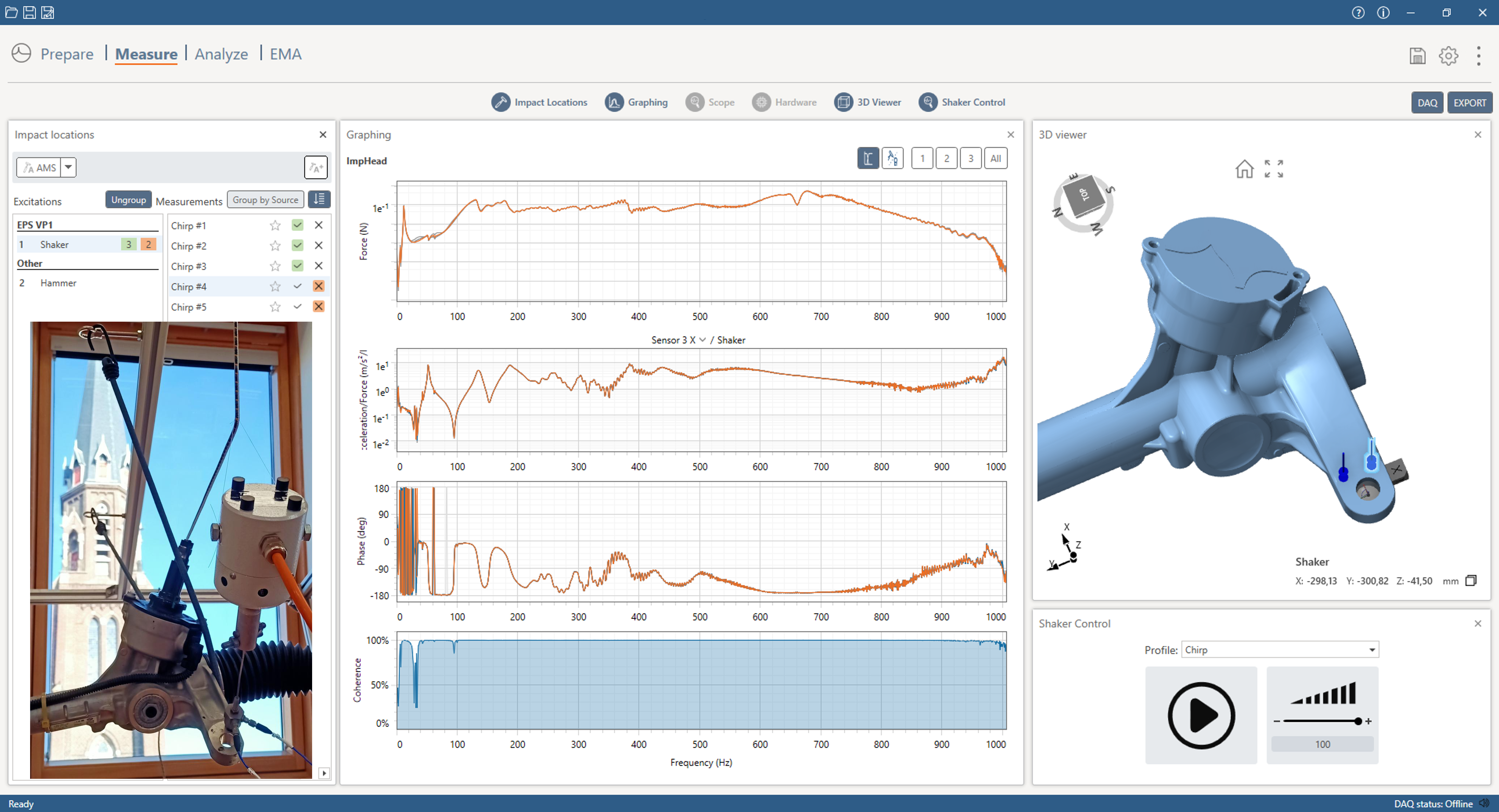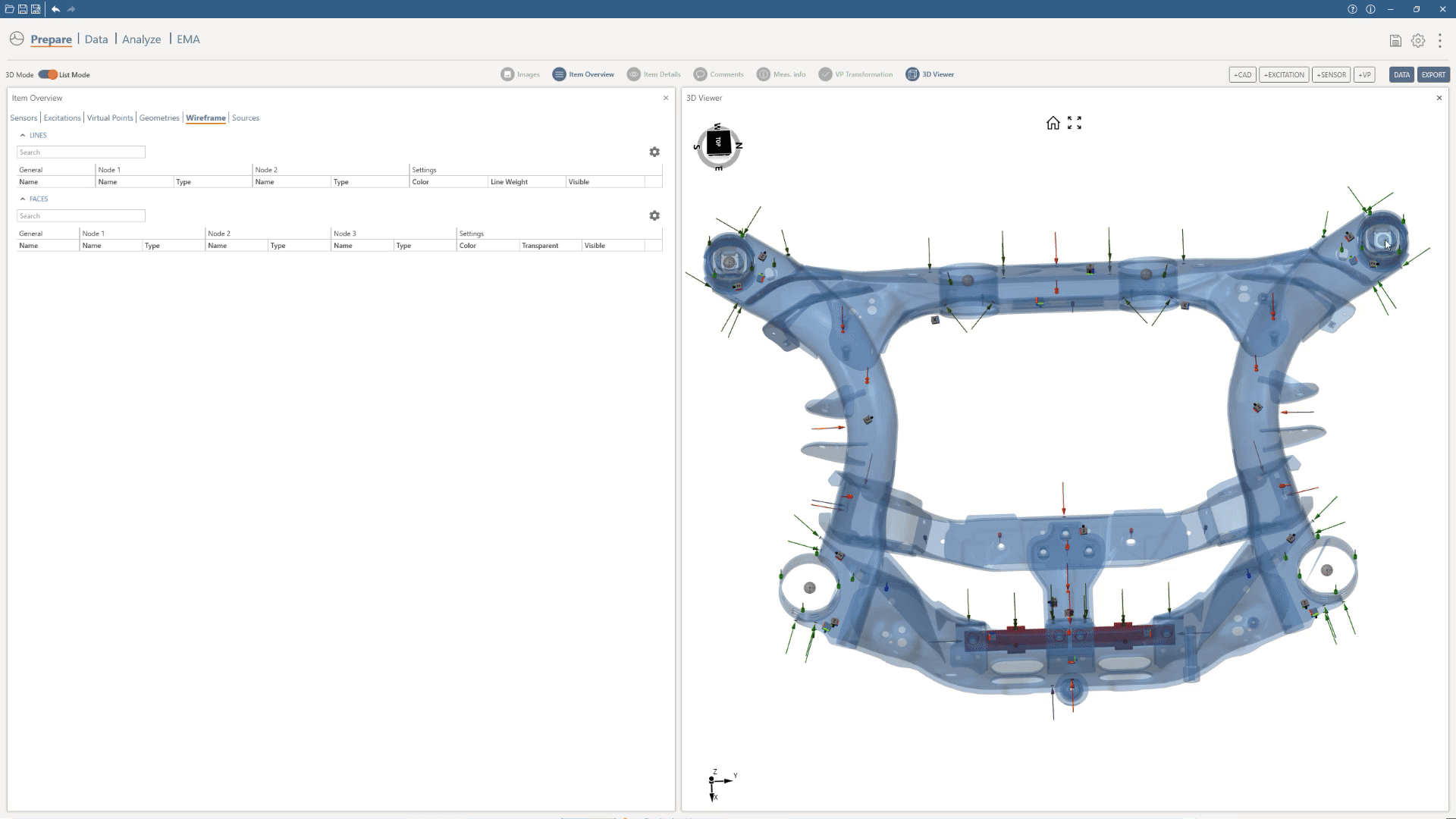DIRAC v4.2 webinar – 3 April
12 March 2024
Version 4.2 of DIRAC has now been released, and we want to share what’s new with you!
On Wednesday, April 3rd, we will organize a 30-minute webinar to show you all the new features and updates of this major release. We will hold the same webinar twice, at 8:30 AM (CET time) and 4:30 PM (CET time).
Subscribe to the DIRAC webinar here:
Join Eric and Stuart on the DIRAC v4.2 journey to learn all the new features and capabilities! In this latest version, you can widen your test capabilities by using shakers. You can decide to use one or more shakers and combine them with hammers, merging their signals. This leaves you complete freedom to pick the best testing solution for your workflow. Of course, you can store all your shakers and impedance heads in the fully renovated hardware database. After adding them, you can easily share the database with your colleagues.
In this version, we have also implemented one of the most requested features: wireframes. In Prepare, you can now link sensors and Virtual Points with lines and faces. You can fully personalize their color and sizes in the list mode. When playing ODS or mode shapes, lines and faces will move accordingly, thanks to the new 3D viewer.
We have also updated the 2D graphing to provide you with a more unified experience across our products. You will not notice a difference yet, but this will allow us to improve the DIRAC graphing capabilities in the future, such as channel selection, legends, and much more.
DIRAC completely changes the way you measure and model sound & vibrations. DIRAC allows engineers to measure FRFs with Virtual Point transformation, making reliable full-vehicle models available earlier in the development process.
DIRAC ensures traceability of results and indicates the quality of the measurement. Overall, DIRAC helps to avoid the final-phase troubleshooting – which can postpone vehicle production – and reduces the number of prototype variants needed. Limit the need to re-do measurements or to troubleshoot issues with emergency teams. In the early stages of vehicle R&D, full vehicle sound & vibration performance can already be estimated by combining measured and simulated FRFs. Over time, these predictions can be updated to reflect changes in the design or decisions that have been made – thus saving valuable time and resources.
Webinar hosts:
Eric Pasma
Eric runs all commercial activities of VIBES. He co-founded VIBES and is the best in explaining the VIBES methodology and how our software helps customers out with specific NVH questions.
Stuart Campbell
Stuart ensures that our products best meet our customers' need. He works at VIBES as Product Manager.


